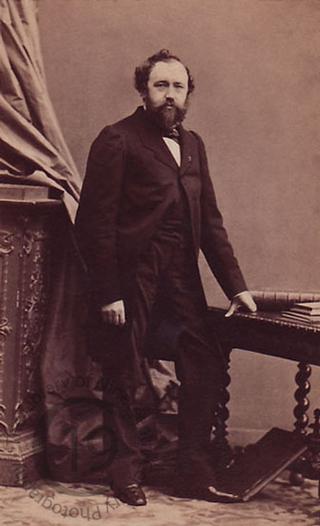
Adolphe Sax
A carte-de-visite portrait of Antoine Joseph (‘Adolphe’) Sax, the instrument designer who in 1842 invented the saxophone.
Born on 6 November 1814 at Dinant in Wallonia, Belgium, his father was an instrument designer himself, who made several changes to the design of the horn. Adolphe began to make his own instruments at an early age, entering two of his flutes and a clarinet into a competition at the age of fifteen. He subsequently studied these two instruments at the Royal School of Music in Brussels.
On leaving school, Sax began to experiment with new instrument designs. His first important invention was an improvement in the design of the bass clarinet which he patented at the age of twenty. In 1841, Sax moved to Paris and began work on a new set of instruments, exhibited there in 1844. These were valved bugles, and although he had not invented the instrument himself, his versions were so much more successful than those of his rivals that they became known as the saxhorn. Produced in approximately seven different sizes, they paved the way for the creation of the flugelhorn and laid the groundwork for the modern euphonium. Saxhorn instruments spread rapidly throughout the world; their valves were accepted as state of the art and are still largely unchanged today. Sax’s advances were soon followed by the formation of the famous British brass band movement, which exclusively adopted the saxhorn range.
In 1846, Sax patented the instrument for which he is now best known, the saxophone. Invented for use in both orchestras and concert bands, by 1846 Sax had designed, at least on paper, a full range of saxophones (from soprano to subcontrabass). Although they never became standard orchestral instruments, the saxophones made his reputation and secured him a job teaching at the Paris Conservatoire from 1867.
Sax continued to make instruments later in life, as well as presiding over a new saxophone class at the Paris Conservatoire. However, rival instrument makers attacked the legitimacy of his patents and mounted a long campaign of litigation against him and his company, driving him into bankruptcy twice (in 1856 and 1873).
Sax suffered from lip cancer between 1853 and 1858 but made a full recovery. He died in 1894 in Paris and was buried in the cemetery at Montmartre.
Photographed by Disdéri of Paris.
Code: 123041




